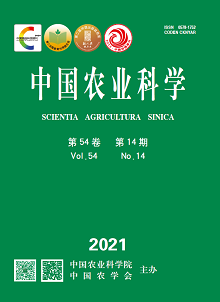【Objective】Harvesting is one of the key links in rapeseed production, which affects the yield and quality. In this experiment, artificially simulated combined harvesting and two-stage harvesting were used and analyzed the impacts on key traits of rapeseeds. This study provides a basis for the selection of mechanical harvesting methods and the determination of supporting parameters.【Method】Two middle-ripening rapeseed varieties with different oil content were selected, and different harvesting periods were used. For combined harvesting the period is 20-44 d in Huanggang and 23-47 d in Xiangyang, and the two-stage harvesting is practiced on different time 20, 26, and 32 d in Huanggang while, 23, 29, 35 d in Xiangyang, after final flowering, whereas 3, 6, 9, and 12 d post-ripening, in Huanggang and Xiangyang, Hubei. Furthermore, key indicators such as1000-grain weight, water content, quality, etc were measured and analyzed. 【Result】The two pilots and two varieties of the combined harvesting reached the physiological maturity about 38 days after final flowering, the required accumulated temperature was about 1 100℃, and the thousand-grain weight and oil content were the largest. Approximately 46 days after the final flowering, the seed moisture and chlorophyll content rapidly decreased to the optimum point, which is a suitable period for mechanized combined harvesting. Moreover, reduction in seed moisture content is highly significantly positively correlated with daily average temperature and atmospheric pressure, while decreased chlorophyll content is highly significantly positively correlated with daily average temperature, but significantly negatively correlated with rainfall. Under D3 (about 33 d after final flowering), the highest average content of 1000-grain weight, oil contents, rate of oil yield, uniformity and oleic acid, and the lowest average content of chlorophyll, linoleic acid and moisture under the two-stage harvest while comparing D3 with D1 and D2, Our study showed that the number of days of post-ripening has no significant effect on the oil content, oil yield, thousand-grain weight, uniformity, oleic acid, and linoleic acid content, but the moisture content rapidly decreased to the optimum point after 6-9 days, which is a suitable time for picking and threshing. The seed moisture content decreased and significantly positively correlated with solar radiation but highly significantly negatively correlated with rainfall. 【Conclusion】During the period of final flowering to the harvesting, the average daily temperature is 19-22℃, the rainfall is 1.0-3.5 mm, and the atmospheric-pressure is 1.45-1.75 kPa. However, under prevailing climatic conditions, the combined harvesting is done on approximately 46th day after final flowering (which is about 8 days after physiological maturity) and the two-staged harvesting is used to cut down on about 33rd day after the final flowering (which is about 5 days before the physiological maturity), then post-ripening practice is carried out (average relative humidity is 64%-80%, the rainfall is 0.7-3.1 mm, and the solar radiation is 10-13 MJ·m-2), to picked the harvested crop after 6-9 days of two-stage harvesting. Under this condition, the moisture content of seed can be reduced to about 15%, and the chlorophyll content can be reduced to below 10 mg·kg-1. There was no significant difference between the two harvesting methods in terms of 1000-grain weight, oil content, rate of oil yield and seed uniformity, however, the oleic acid and linoleic acid contents of seed were higher, seed and oil quality were better in two-stage harvesting as compared with the combined harvesting.









